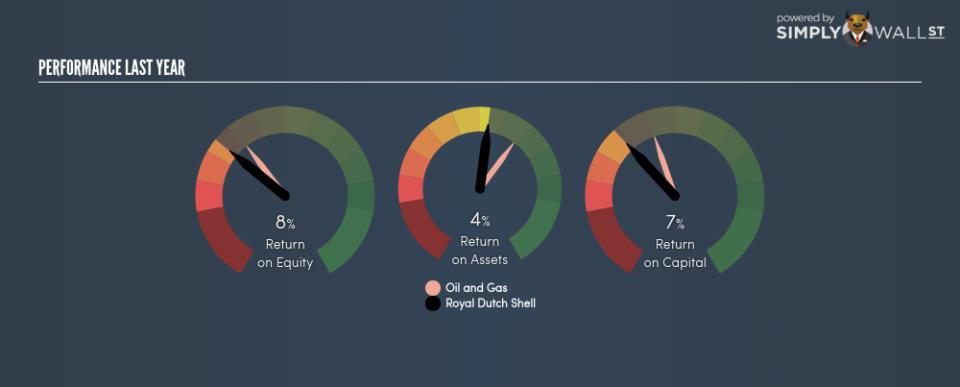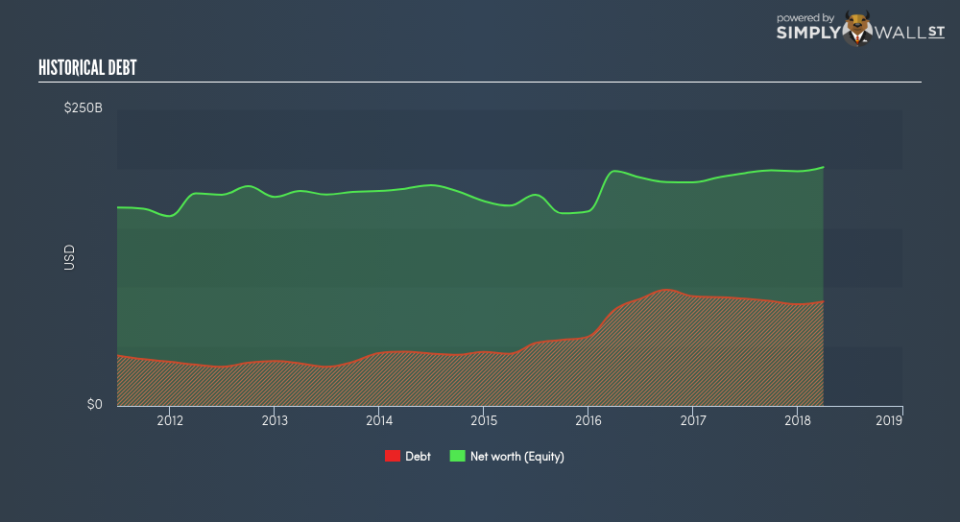Why Royal Dutch Shell plc (AMS:RDSA) Delivered An Inferior ROE Compared To The Industry

The content of this article will benefit those of you who are starting to educate yourself about investing in the stock market and want to begin learning the link between Royal Dutch Shell plc (AMS:RDSA)’s return fundamentals and stock market performance.
Royal Dutch Shell plc (AMS:RDSA) generated a below-average return on equity of 7.86% in the past 12 months, while its industry returned 10.54%. RDSA’s results could indicate a relatively inefficient operation to its peers, and while this may be the case, it is important to understand what ROE is made up of and how it should be interpreted. Knowing these components could change your view on RDSA’s performance. Today I will look at how components such as financial leverage can influence ROE which may impact the sustainability of RDSA’s returns. Check out our latest analysis for Royal Dutch Shell
Peeling the layers of ROE – trisecting a company’s profitability
Return on Equity (ROE) is a measure of Royal Dutch Shell’s profit relative to its shareholders’ equity. It essentially shows how much the company can generate in earnings given the amount of equity it has raised. While a higher ROE is preferred in most cases, there are several other factors we should consider before drawing any conclusions.
Return on Equity = Net Profit ÷ Shareholders Equity
ROE is assessed against cost of equity, which is measured using the Capital Asset Pricing Model (CAPM) – but let’s not dive into the details of that today. For now, let’s just look at the cost of equity number for Royal Dutch Shell, which is 9.04%. Since Royal Dutch Shell’s return does not cover its cost, with a difference of -1.18%, this means its current use of equity is not efficient and not sustainable. Very simply, Royal Dutch Shell pays more for its capital than what it generates in return. ROE can be dissected into three distinct ratios: net profit margin, asset turnover, and financial leverage. This is called the Dupont Formula:
Dupont Formula
ROE = profit margin × asset turnover × financial leverage
ROE = (annual net profit ÷ sales) × (sales ÷ assets) × (assets ÷ shareholders’ equity)
ROE = annual net profit ÷ shareholders’ equity
Essentially, profit margin shows how much money the company makes after paying for all its expenses. Asset turnover reveals how much revenue can be generated from Royal Dutch Shell’s asset base. And finally, financial leverage is simply how much of assets are funded by equity, which exhibits how sustainable the company’s capital structure is. Since ROE can be inflated by excessive debt, we need to examine Royal Dutch Shell’s debt-to-equity level. At 43.72%, Royal Dutch Shell’s debt-to-equity ratio appears sensible and indicates its ROE is generated from its capacity to increase profit without a large debt burden.
Next Steps:
ROE is a simple yet informative ratio, illustrating the various components that each measure the quality of the overall stock. Royal Dutch Shell’s below-industry ROE is disappointing, furthermore, its returns were not even high enough to cover its own cost of equity. Although, its appropriate level of leverage means investors can be more confident in the sustainability of Royal Dutch Shell’s return with a possible increase should the company decide to increase its debt levels. ROE is a helpful signal, but it is definitely not sufficient on its own to make an investment decision.
For Royal Dutch Shell, I’ve put together three key factors you should further research:
Financial Health: Does it have a healthy balance sheet? Take a look at our free balance sheet analysis with six simple checks on key factors like leverage and risk.
Valuation: What is Royal Dutch Shell worth today? Is the stock undervalued, even when its growth outlook is factored into its intrinsic value? The intrinsic value infographic in our free research report helps visualize whether Royal Dutch Shell is currently mispriced by the market.
Other High-Growth Alternatives : Are there other high-growth stocks you could be holding instead of Royal Dutch Shell? Explore our interactive list of stocks with large growth potential to get an idea of what else is out there you may be missing!
To help readers see pass the short term volatility of the financial market, we aim to bring you a long-term focused research analysis purely driven by fundamental data. Note that our analysis does not factor in the latest price sensitive company announcements.
The author is an independent contributor and at the time of publication had no position in the stocks mentioned.


